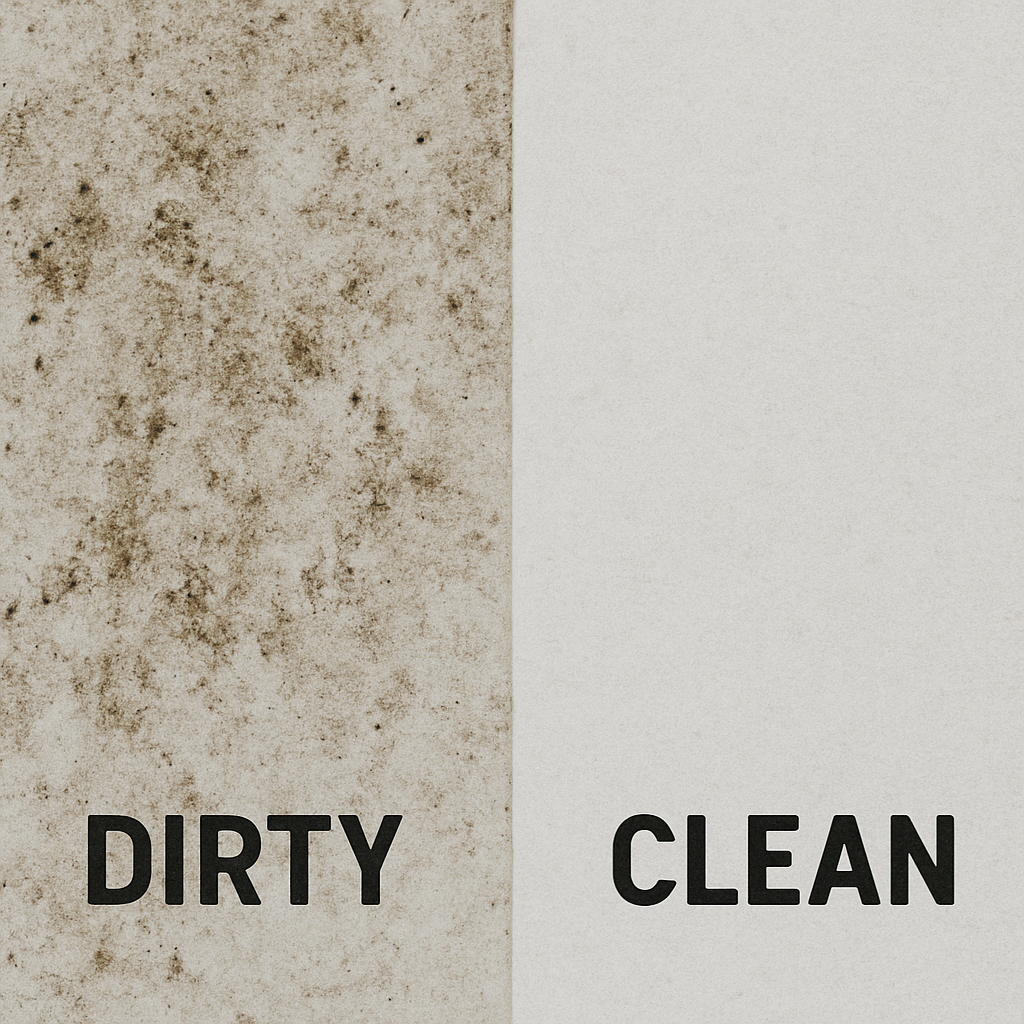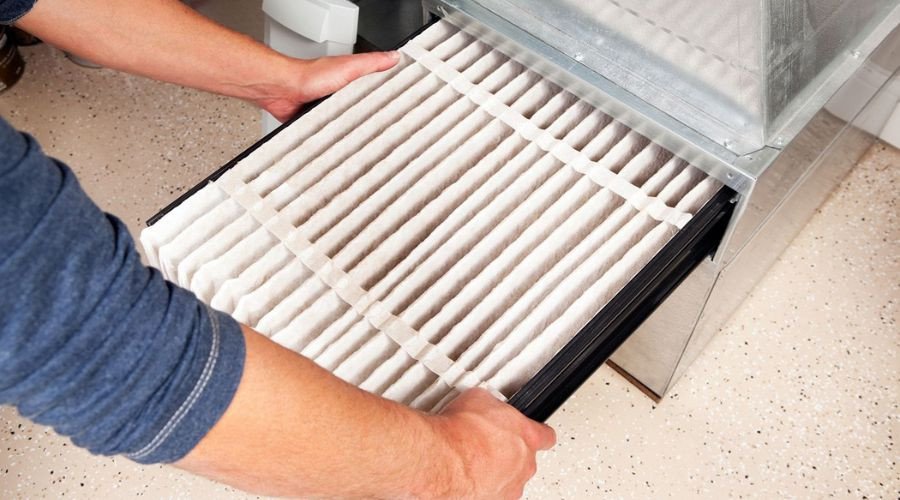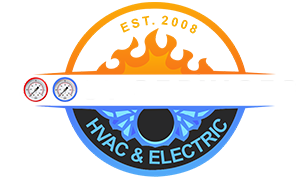# Best Practices for Air Filter Replacement
In the hustle and bustle of daily life, it’s easy to overlook the small yet crucial components of our home systems, like air filters. However, maintaining your air filters is essential to ensuring a healthy and efficient living environment. At BOOST SERVICES, we understand the importance of keeping your HVAC system in top condition. In this guide, we will walk you through the best practices for replacing air filters, providing you with the knowledge to ensure your air quality is always at its best.

Table of Contents
Understanding Air Filters
Air filters are designed to capture dust, pollen, and other airborne particles, preventing them from circulating throughout your home. They are an integral part of any HVAC system, air purifier, or air cleaner, ensuring that the air you breathe is clean and safe. Regularly replacing your air filters is crucial to maintaining indoor air quality and the efficiency of your systems.
Types of Air Filters
- HEPA Filters: High-Efficiency Particulate Air (HEPA) filters are known for their ability to capture at least 99.97% of particles as small as 0.3 microns. They are ideal for individuals with allergies or respiratory issues.
- Purifier Filters: Designed for use in air purifiers, these filters help remove impurities and improve air quality.
- Replacement Filters: These are available for various systems and need to be replaced regularly to maintain performance.
When to Replace Your Air Filter
The frequency of air filter replacement depends on several factors, including the type of filter you use, the manufacturer’s recommendations, and your home’s specific needs. As a general rule of thumb:
- HEPA Filters: Replace every 12 to 18 months.
- Standard Filters: Replace every 3 months, or more frequently if you have pets or allergies.
- Purifier Filters: Follow the manufacturer’s guidelines, typically every 6 to 12 months.
Regular replacement not only improves air quality but also prolongs the life of your HVAC system by reducing strain on the motor.

How to Replace Air Filters
Step-by-Step Guide
- Turn Off the System: Before replacing the filter, ensure that your HVAC system or air purifier is turned off.
- Locate the Filter: Find the filter compartment in your system. It is often located near the return air duct or blower compartment.
- Remove the Old Filter: Carefully remove the old filter. Note the direction of airflow indicated on the filter.
- Insert the New Filter: Place the new filter in the compartment, ensuring it aligns with the airflow direction.
- Secure the Compartment: Close and secure the filter compartment, then turn the system back on.
Choosing the Right Filter
When purchasing a replacement filter, consider the size and type required for your system. Opt for filters that match your specific needs, whether it’s a HEPA filter for maximum filtration or a standard filter for everyday use.
Benefits of Regular Air Filter Replacement
- Improved Air Quality: Regular replacement ensures that your indoor air is free from allergens and pollutants.
- Enhanced System Efficiency: A clean filter allows your HVAC system to operate more efficiently, reducing energy consumption.
- Cost Savings: By maintaining your filters, you can avoid costly repairs and extend the lifespan of your system.
Where to Buy Air Filters
Finding the right place to purchase your air filters can be just as important as choosing the right filter. Look for trusted retailers that offer a wide selection of filters, including:
- Local HVAC Suppliers: These often provide specialized advice and a range of options tailored to your needs.
- Online Retailers: Websites like Amazon provide a vast selection of filters, often at competitive prices.
- BOOST SERVICES: Contact us directly for expert advice and quality air filter options at competitive prices.
Community-Oriented Service
At BOOST SERVICES, we pride ourselves on our community-focused approach. We understand the unique needs of our Pasadena community and are committed to providing reliable, high-quality service. Our team of experts is ready to assist you with all your HVAC needs, ensuring that your air quality and comfort are always prioritized.

Conclusion
Replacing your air filters regularly is a simple yet effective way to maintain a healthy and efficient home environment. By following these best practices, you can ensure that your air quality remains optimal and your HVAC system functions smoothly. For more information or assistance with your HVAC needs, don’t hesitate to reach out to us at BOOST SERVICES. Our dedicated team is ready to serve you quickly and efficiently.
Contact Us Today
For expert advice and service excellence, call BOOST SERVICES at:
- 818-277-5056
- 747-264-6358
Let us help you breathe easier with our tailored solutions and commitment to quality service.
FAQ — Best Practices for Air Filter Replacement
How often should I replace my HVAC air filter?
Check monthly and replace every 30–60 days during peak use. Homes with pets, allergies, construction dust, or wildfire smoke may need more frequent changes.
What are the signs my air filter needs to be replaced now?
Look for reduced airflow, longer cooling or heating cycles, rising energy bills, visible dust on vents, or a visibly dirty, grey, or warped filter media.
Which MERV rating should I choose?
For most homes, MERV 8–11 balances filtration and airflow. Consider MERV 11–13 for allergy or smoke concerns if your system is designed to handle the higher resistance.
What filter sizes are common and how do I find mine?
Typical sizes include 16x20x1, 16x25x1, 20x20x1, and 20x25x1. Check the label on the existing filter frame or the furnace/air handler manual for the exact size.
How do I replace a return grille filter safely?
Turn the system off, open the grille, note the airflow arrow direction, remove the old filter, insert the new one with arrows pointing toward the duct/furnace, close the grille, and restart the system.
How do I replace a filter at the furnace or air handler?
Switch power off, open the filter slot door, slide out the old filter, match airflow arrows toward the blower, insert the new filter snugly, close the panel, and restore power.
Which way should the airflow arrow point on the filter?
The arrow must point toward the equipment (toward the blower/air handler) and away from the return grille. Incorrect orientation reduces performance and can cause noise.
Can a high-MERV filter harm my system?
If your system isn’t designed for higher resistance, a very high-MERV filter can reduce airflow, cause icing in cooling mode, or overwork the blower. Follow manufacturer guidance.
Are washable/reusable filters a good idea?
They can be, if cleaned and dried thoroughly on schedule. However, many disposable pleated filters offer better fine-particle capture with predictable performance.
How do I know if my filter is actually improving indoor air quality?
Choose an appropriate MERV rating, replace on time, and monitor dust levels, allergy symptoms, and system performance. For sensitive homes, consider MERV 11–13 and proper duct sealing.
What mistakes should I avoid when replacing air filters?
Avoid using the wrong size, installing backward, skipping replacements for months, crushing the frame to make it fit, or running the system with no filter installed.
Should I set reminders for filter changes?
Yes. Create calendar reminders or mark the installation date on the filter frame. Regular reminders help maintain efficiency and prolong equipment life.
Do multiple return grilles mean multiple filters?
Often yes. Some homes have a filter at each return grille, others only at the air handler. Inspect each return and the air handler to confirm all filter locations.
What if my filter looks clean but airflow still seems weak?
The filter may not be the root cause. Check for closed vents, duct obstructions, dirty coils, or blower issues. Schedule a professional if airflow remains low.
Can better filters reduce HVAC maintenance needs?
Yes. Proper filtration keeps coils and ducts cleaner, supports correct airflow, and can reduce service calls—especially when combined with regular tune-ups and clean ducts.
What is a good seasonal checklist for air filters?
Use this quick list:
- Verify correct filter size and MERV rating
- Install a fresh filter at season start
- Inspect monthly; replace when dirty
- Confirm airflow arrow orientation
- Note the change date for reminders

